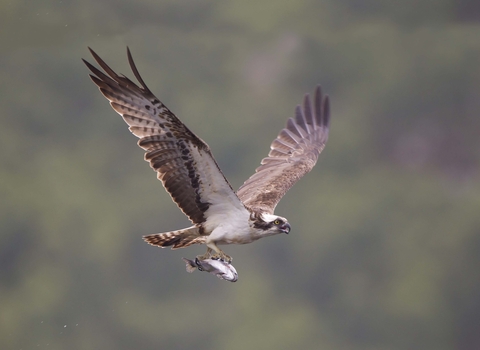
©Peter Cairns/2020

©Peter Cairns/2020VISION

©Peter Cairns/2020VISION
Osprey
A great way to get up close and personal with the magnificent osprey is via one of the many nestcams set-up in the places that it breeds: Scotland, Cumbria, Wales and the East Midlands.
Scientific name
Pandion haliaetusWhen to see
March to SeptemberTop facts
Category
Stats
Length: 56cmWingspan: 1.6m
Weight: 1.5kg
Average lifespan: 9 years
Classified in the UK as Amber under the Birds of Conservation Concern 5: the Red List for Birds (2021). Protected in the UK under the Wildlife and Countryside Act, 1981.
